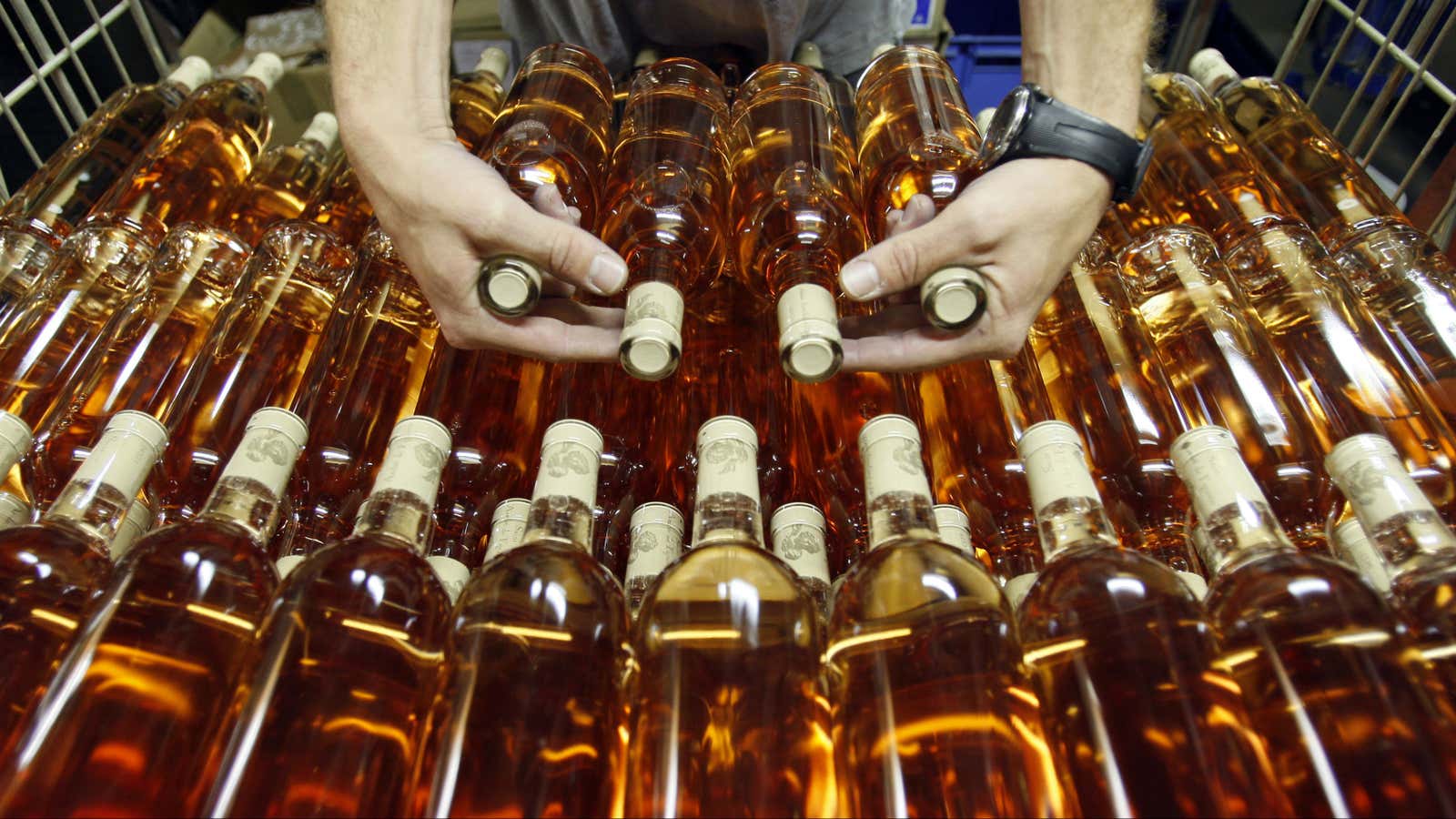There is now rosé in cans, rosé in cardboard cartons, even so-called “frosé,” in which the bubbly booze is served up like a frozen margarita.
The data show it: Rosé, a happy-hour favorite and faithful companion on sweltering midsummer weekends, is officially the pink drink of the year. Sales growth across wine overall has remained relatively stable during the last five years, but retailers have seen a recent boom for rosé, particularly in the last two years.
Wine companies have noticed, too. In a conversation with Bloomberg, Rodolphe Boulanger, who oversees wine, beer, and liquor at the online food grocery store FreshDirect, said his company sold just four brands in 2014. In each year since, the number has gone skyward. Today, it stocks more than 90.
“There’s been a decoupling of rosé from the rest of wine; it’s its own alcohol category,” Boulanger said. In June, Nielsen data showed rosé had grown by 53% from the same time last year. That’s a sky-high number considering the overall category grew just 4% during the same stretch of time.
To be sure, Americans love wine. The number of gallons consumed in the US between the mid-1930s and 2016 increased by about 2,775% to 949 million gallons, according to The Wine Institute, an organization that represents the interests of US vintners.
The pink hue of rosé has everything to do with how long winemakers expose clear grape juice to the crushed red grape skins—a process called maceration. Some Syrah producers soak their juice with grape skins for more than 50 days to get a deep, red wine. Rosé, on the other end, only gets contact for about six to 24 hours.
Sales show rosé is having a moment—enough of one that some have wondered if its popularity hurt beer sales. Some of those sales are attributed to the drink’s ample presence across social media, where #roseallday has become increasingly common.
